Antarctic Wildlife Adventure
Ushuaia - Buenos Aires
Join us on an unforgettable 21-day Antarctic Wildlife Adventure departing Ushuaia, Argentina. Onboard the small ship M/V Sea Spirit; this expedition takes you to the Falkland Islands, South Georgia, and the Antarctic Peninsula for an up-close and personal wildlife encounter and breathtaking polar landscapes.
Your adventure starts in Ushuaia, the world’s southernmost city, where you will be greeted and transferred to a quality hotel. Take some time to explore this lively port city, perhaps visiting the Museo del Fin del Mundo to learn about local history and wildlife. The next day, board the M/V Sea Spirit, your comfortable home for the voyage. Expert lectures will prepare you for future wonders as the ship sails across the South Atlantic Ocean.
The first stop is the Falkland Islands, a birdwatcher’s paradise with accessible penguin and albatross colonies. Here, you can see marine mammals, including Peale’s and Commerson’s dolphins. Then, you will go to South Georgia, where you will see dramatic landscapes teeming with wildlife, elephant seals, fur seals, and vast king penguin colonies. Daily Zodiac excursions will bring you up close to these natural wonders for unparalleled photography opportunities.
The journey ends in the South Shetland Islands and the Antarctic Peninsula, where pristine polar wilderness awaits. Explore glaciers, icebergs and penguin colonies. The expedition expert guides will provide insightful lectures on the region’s ecology, geology and history to deepen your understanding of this unique environment. Return to Ushuaia with a newfound appreciation for the beauty and wonder of Antarctica.
Activities
Hiking
Lectures
Polar Plunge
Sea Kayaking
Wildlife Watching
Zodiac Cruises
Itinerary
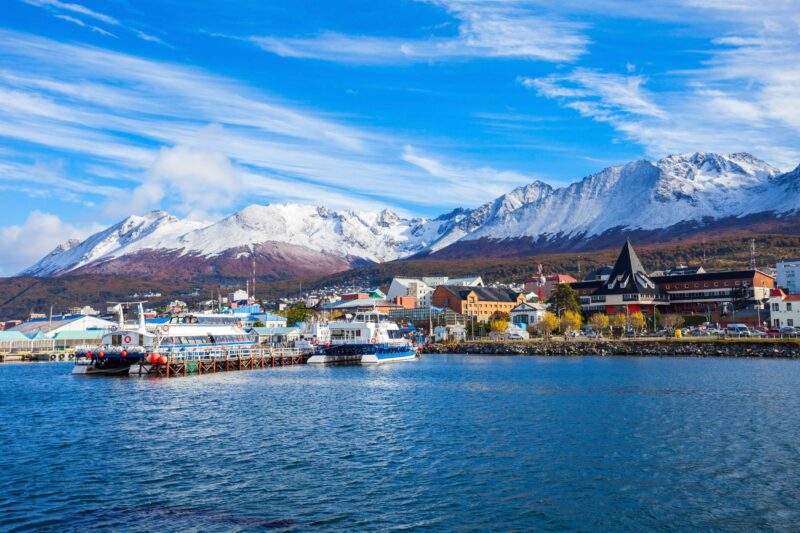
Days 1-2
Ushuaia
Welcome to Ushuaia, the world’s southernmost city and starting point of our Antarctic expedition! Upon your arrival at the airport, you will be greeted by our staff and transferred to a quality hotel, which has been arranged by us and is included in the price of the itinerary. For the rest of the day, you are free to explore this vibrant port city and adventure hub. For an introduction to local history and wildlife, the interesting Museo del Fin del Mundo is worth a visit. If you have time to spare, a variety of nature activities can be arranged to suit all interests and fitness levels, from hiking in nearby Tierra del Fuego National Park to wildlife viewing in the Beagle Channel. For dinner, Ushuaia offers a wide range of restaurants featuring Patagonian lamb and delectable Fuegian seafood.
At 55 degrees latitude south, Ushuaia (pronounced oo-swy-ah) is closer to the South Pole than to Argentina's northern border with Bolivia. It is the capital and tourism base for Tierra del Fuego, the island at the southernmost tip of Argentina.Although its stark physical beauty is striking, Tierra del Fuego's historical allure is based more on its mythical past than on rugged reality. The island was inhabited for 6,000 years by Yámana, Haush, Selk'nam, and Alakaluf Indians. But in 1902 Argentina, eager to populate Patagonia to bolster its territorial claims, moved to initiate an Ushuaian penal colony, establishing the permanent settlement of its most southern territories and, by implication, everything in between.When the prison closed in 1947, Ushuaia had a population of about 3,000, made up mainly of former inmates and prison staff. Today the Indians of Darwin's "missing link" theory are long gone—wiped out by diseases brought by settlers and by indifference to their plight—and the 60,000 residents of Ushuaia are hitching their star to tourism.The city rightly (if perhaps too loudly) promotes itself as the southernmost city in the world (Puerto Williams, a few miles south on the Chilean side of the Beagle Channel, is a small town). You can make your way to the tourism office to get your clichéd, but oh-so-necessary, "Southernmost City in the World" passport stamp. Ushuaia feels like a frontier boomtown, at heart still a rugged, weather-beaten fishing village, but exhibiting the frayed edges of a city that quadrupled in size in the '70s and '80s and just keeps growing. Unpaved portions of Ruta 3, the last stretch of the Pan-American Highway, which connects Alaska to Tierra del Fuego, are finally being paved. The summer months (December through March) draw more than 120,000 visitors, and dozens of cruise ships. The city is trying to extend those visits with events like March's Marathon at the End of the World and by increasing the gamut of winter activities buoyed by the excellent snow conditions.A terrific trail winds through the town up to the Martial Glacier, where a ski lift can help cut down a steep kilometer of your journey. The chaotic and contradictory urban landscape includes a handful of luxury hotels amid the concrete of public housing projects. Scores of "sled houses" (wooden shacks) sit precariously on upright piers, ready for speedy displacement to a different site. But there are also many small, picturesque homes with tiny, carefully tended gardens. Many of the newer homes are built in a Swiss-chalet style, reinforcing the idea that this is a town into which tourism has breathed new life. At the same time, the weather-worn pastel colors that dominate the town's landscape remind you that Ushuaia was once just a tiny fishing village, snuggled at the end of the Earth.As you stand on the banks of the Canal Beagle (Beagle Channel) near Ushuaia, the spirit of the farthest corner of the world takes hold. What stands out is the light: at sundown the landscape is cast in a subdued, sensual tone; everything feels closer, softer, and more human in dimension despite the vastness of the setting. The snowcapped mountains reflect the setting sun back onto a stream rolling into the channel, as nearby peaks echo their image—on a windless day—in the still waters.Above the city rise the last mountains of the Andean Cordillera, and just south and west of Ushuaia they finally vanish into the often-stormy sea. Snow whitens the peaks well into summer. Nature is the principal attraction here, with trekking, fishing, horseback riding, wildlife spotting, and sailing among the most rewarding activities, especially in the Parque Nacional Tierra del Fuego (Tierra del Fuego National Park).
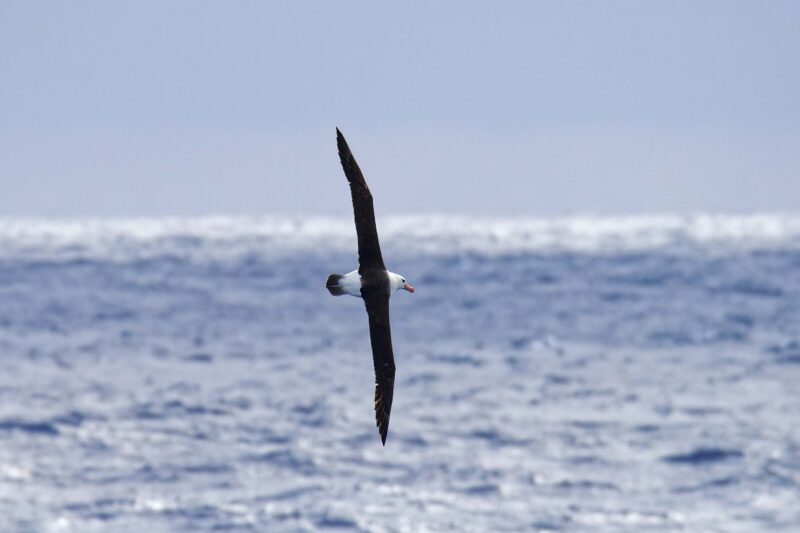
Days 3-4
Drake Passage Seas
After passing the islands of Tierra del Fuego, we turn south to begin our crossing of the Drake Passage. The majestic wandering albatross and other graceful subantarctic seabirds are common in these waters and can readily be viewed from panoramic open decks and balconies. We also cross the Antarctic Convergence, the biological boundary of the Southern Ocean. The ship’s stabilizing fins provide comfort in the event of rough seas. We hope to arrive in the South Shetland Islands on the evening of our second day at sea.

Days 5-8
South Shetland Islands
Within the next days, we explore the highlights of the South Shetland Islands and the Antarctic Peninsula. This region contains some of the world’s most impressive scenery and the best wildlife viewing in Antarctica. Sheltered bays and channels sparkle with ice and reflect towering mountain peaks coated in permanent snow and immense glaciers. Icebergs of every size and description complete an image of incomparable beauty. Waters rich with krill are home to huge numbers of marine mammals and seabirds. The whole area is alive with penguins foraging at sea and forming large rookeries at special places on land. Here we also find Antarctic research bases of various nationalities, some with gift shops and post offices. The South Shetland Islands are the northernmost islands in Antarctica and will likely be our first sight of land. This wildly beautiful island chain contains many landing sites with historical significance and abundant wildlife. Among them is Elephant Island, where men from Shackleton’s famous Endurance expedition spent the winter of 1916. We will also explore the supremely picturesque Gerlache Strait area of the Antarctic Peninsula, a pristine wilderness of spectacular white landscapes, colossal icebergs, obliging marine mammals and bustling penguin colonies. Here we have a chance to land on the continent of Antarctica. Throughout this area, we find large colonies of gentoo, chinstrap and Adélie penguins, sometimes side by side. This a great time for close encounters with inquisitive penguin chicks, who are now gaining independence as they fledge. This is also the peak of the whale-watching season. Having gorged themselves on krill all summer, humpback and minke whales become more playful and obliging to Zodiacs and kayakers. Crabeater and Weddell seals are joined by Antarctic fur seals and southern elephant seals. The skies are full of newly fledged seabirds. Antarctica is a true wilderness with unpredictable weather and ever-changing ice conditions, which will dictate our route and exploration opportunities. With more than 14 hours of daylight per day, we seize every chance to experience excellent wildlife viewing and amazing scenery via Zodiac cruises and shore excursions.
Some 770 kilometers (478 miles) south of Cape Horn, the South Shetland Islands are usually the first land seen in Antarctica. Separated from the Antarctic Peninsula by the Bransfield Strait, nine major islands make up the group. The region was the first to be exploited by sealers in the early 19th century, and because of its proximity to South America, it still is the most visited by scientists and tourists. Chinstrap, Adelie, Gentoo and Macaroni Penguins all breed here. In addition, because it is the warmest part of the continent, large moss beds as well as orange, black, grey and green lichens grow –even hair grass and pearlwort manage to survive. Leopard seals, Weddell seals, crabeater seals, Southern elephant seals and Antarctic fur seals can be seen in the water and on the beaches.
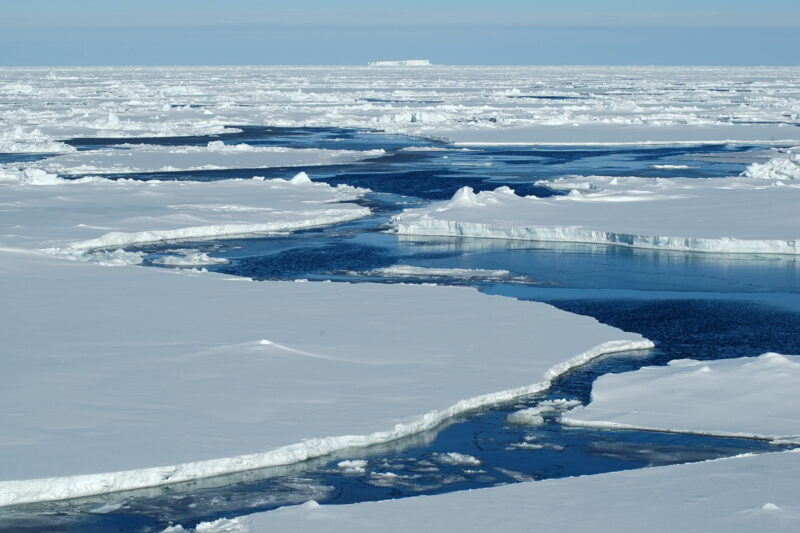
Days 9-10
Cruising Scotia Sea
We now proceed northeast through the wildlife-rich waters of the Scotia Sea. We keep a lookout for abundant humpback and fin whales along the way. Briefings, bio-security procedures and presentations by our lecture staff prepare you for our arrival in South Georgia.
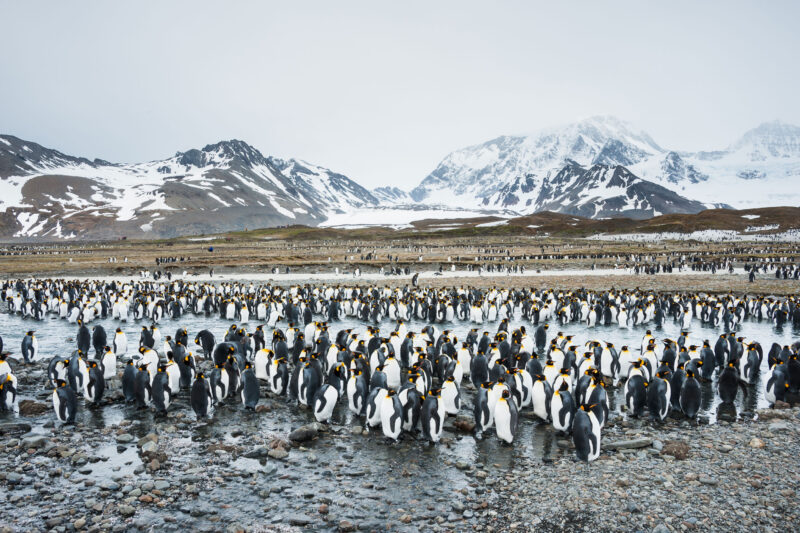
Days 11-14
South Georgia Island
The next five days will be devoted to the exploration of the unique and spectacular wilderness of South Georgia, home to some of the greatest concentrations of wildlife on the planet. This isolated subantarctic island is said to host upwards of 100 million seabirds, including numerous species of albatross, penguins, prions, petrels, shags, skuas, gulls and terns. Among these is one of the largest flying birds in the world—the wandering albatross. Here you have a rare opportunity to witness part of their remarkable life cycle. While most seabird chicks are already fledging, wandering albatross chicks are only now hatching in grassy nests overlooking the wild Southern Ocean. On South Georgia’s legendary beaches, king penguins are gathered in huge colonies that stretch from sandy shorelines to the foothills of glaciated mountains. Also at this time, hundreds of thousands of macaroni penguin chicks are getting ready to head out to sea. Rare birds such as the endemic South Georgia pipit and yellow-billed pintail round out the list of 78 bird species found across the territory. The successfully completed rat eradication program has made this wilderness even more pristine and rich with birdlife. South Georgia is also home to staggering numbers of elephant seals and fur seals. At this time, thousands of fat elephant seal pups are lounging around on shore while mobs of rambunctious fur seal pups take to the water. Once hunted nearly to extinction, large whales have returned to the bountiful seas surrounding South Georgia. With the whalers long gone, the historical whaling station of Grytviken is now home to the excellent South Georgia Museum. Here you will also find the grave of Sir Ernest Shackleton, heroic polar explorer and leader of the Endurance expedition. In this rugged yet accessible environment, superb wildlife viewing is best complemented by active adventure. There are many opportunities for guided treks through this raw and untamed wilderness, including the legendary Shackleton Walk. For sea kayakers, the wildlife-rich waters of South Georgia offer the chance to paddle with hordes of seals and penguins in some of the world’s most scenic waterways. This is expedition cruising at its most authentic. Our precise route and exploration opportunities are dependent on weather in this wild and remote corner of the world. Our experienced captain and expedition leader will continually adjust plans to take maximum advantage of the conditions and circumstances at hand. You can be sure that we will take every safe opportunity to go ashore in this challenging environment.
South Georgia is a breathtaking destination of towering snow-covered mountains, mighty glaciers, and low-lying grasslands that attract an astounding concentration of wildlife. It is possible to find Southern fur seals, Southern elephant seals and a variety of albatross species including Black-browed, Light-mantled Sooty, Grey-headed and the spectacular Wandering Albatross, plus thousands of King and Macaroni Penguins. South Georgia is also linked to the early Antarctic explorers. Captain James Cook first stepped ashore in 1775, but perhaps more famous is Ernest Shackleton’s arrival in 1916 following the sinking of his ship Endurance. Shackleton’s grave and the whaling museum at Grytviken are highlights, as would be a visit to one of the King Penguin colonies at Salisbury Plain or Gold Harbour.

Days 15-16
Sailing the Antarctic Ocean (Southern Ocean)
We sail west toward the Falkland Islands. Presentations and workshops by our expert staff, as well as our range of onboard recreation facilities, ensure that this day at sea is not idly spent. Pelagic seabirds are our constant companions as we keep a vigilant watch for dolphins and whales in these productive waters.
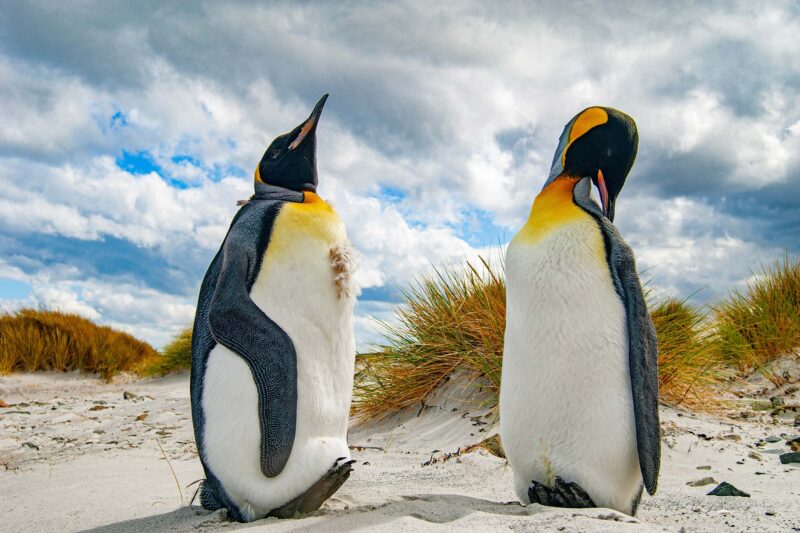
Days 17-18
Falkland Islands
On these days we intend to come alongside the wharf at Stanley, the historic capital of the Falkland Islands. Attractions within pleasant walking distance along the waterfront promenade include the Falkland Islands Museum, the governor’s house, various war memorials, quality gift shops and charming pubs. Christ Church Cathedral features an impressive whalebone arch and dramatic views of shipwrecks in the harbor. We also plan to offer an excursion to Gypsy Cove, a national nature reserve where white sand beaches are frequented by numerous bird species, including the endemic Falklands flightless steamer duck. Here you can also see Magellanic penguins, whose chicks have fledged and are making a tentative start to their lives at sea. At this time, you may even find groups of sea lions hauled out on shore. We continue our exploration of the Falklands in the isolated outlying islands. These bleakly beautiful isles are havens for wildlife. Large colonies of seabirds, perched on windy bluffs overlooking azure seas, are easily accessible by hiking over lush meadows. At this time, black-browed albatross soar down from above while feisty rockhopper penguins leap up surf-battered cliffs from below to feed their large chicks amongst the tussocks. On nearby beaches, gentoo penguin chicks are starting to fledge while adult king penguins and chicks of all ages are getting ready to brave the austral winter. Just offshore, you may see Peale’s dolphins and even killer whales patrolling the coasts. A wide range of land birds, including the endemic Cobb’s wren and inquisitive striated caracara, contribute to an abundance of wildlife that will leave nature lovers breathless.

Days 19-22
Cruising the South Atlantic Ocean
The ocean breezes gradually get warmer as we sail north through the South Atlantic Ocean. As we enter deeper waters, we are on constant lookout for killer whales, blue whales, sei whales and southern right whales. This is also the time for festivities such as the Captain’s Farewell Cocktail and the end-of-voyage slideshow.
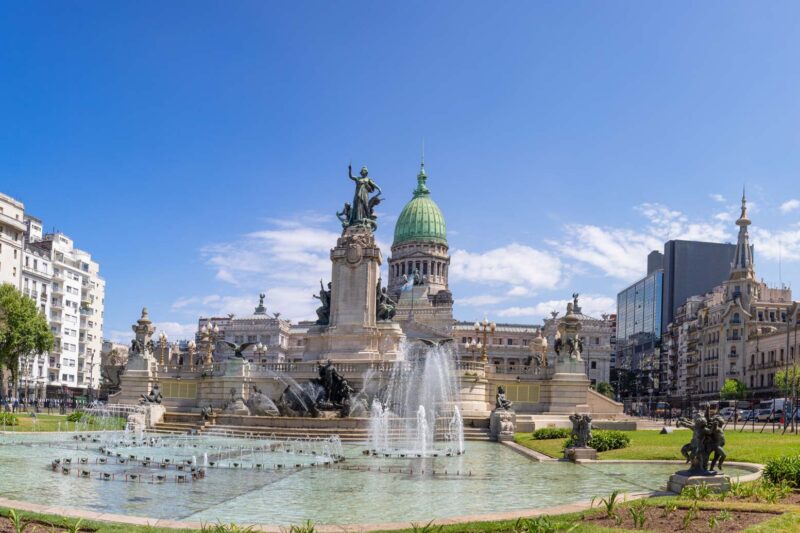
Day 23
Buenos Aires
Right after the disembarkation, we provide a group transfer to Ezeiza (EZE) - International Airport or central location in Buenos Aires. As you look back on your wonderful experience, you may already be looking forward to your next polar adventure! Note: we recommend to schedule your return flight from Buenos Aires (EZE) with a departure time that is not earlier than 7pm.
Glamorous and gritty, Buenos Aires is two cities in one. What makes Argentina's capital so fascinating is its dual heritage—part European, part Latin American. Plaza de Mayo resembles a grand square in Madrid, and the ornate Teatro Colón would not be out of place in Vienna. But you’ll know you’re in South America by the leather shoes for sale on cobbled streets and impromptu parades of triumphant soccer fans. Limited-production wines, juicy steaks, and ice cream in countless flavors are among the old-world imports the city has perfected.
Map
Need advice?
No hard sell. Just excellent advice.
And Penguins.
- Guaranteed Best Operator Price
- 100% Financial Protection
- Free Travel Advice and Support
The Ship
Choose Your Cabin
Deck Plan



































